- Call us: 01444 237070
- Contact Us
- Stores
- Sign In / Register
-
- Back
- Used Cameras
- Used Lenses
- Used Video
- Used Film Equipment
- Used Stock Alert
- Used Accessories
- Recently Added Used Equipment
- Used Clearance
- Faulty
- Park Picks
- Sell or Part Exchange
- Trade-In
- Blog
- New in
- Call us
- Contact us
- Stores
- Sign in
- Categories
- Tips & Inspiration
- Reviews
- News
- Events
- Features
- Buying Guides
- Competitions
DJI Spark vs Mavic Pro Review
Groundbreakers, innovators, and all-round fun-makers, DJI have just announced their latest drone, the DJI Spark. As second albums go, the DJI Spark is a good one. It's smaller, lighter, more refined than the first one, the DJI Mavic Pro. If you're into aerial photography, or you're just looking for a compact, fun, and super easy to use drone, this comparison of the DJI Spark vs the Mavic Pro should help you decide which one to buy.
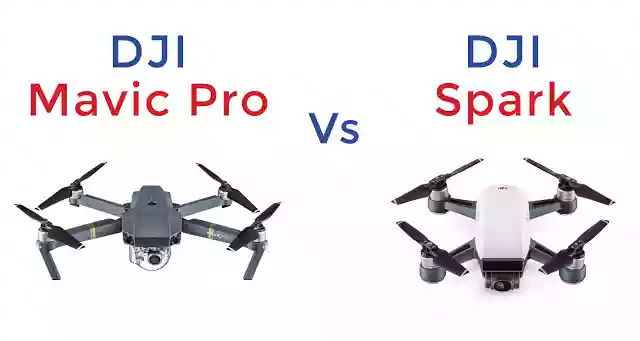
Once upon a time, drones were the reserve of the few. They were huge and unwieldy, required a PhD in Aerospace Engineering to set up, 20 years fighter-pilot experience to fly, and a small mortgage to buy. Then DJI came along in 2016 with the miniature marvel that is the Mavic Pro.
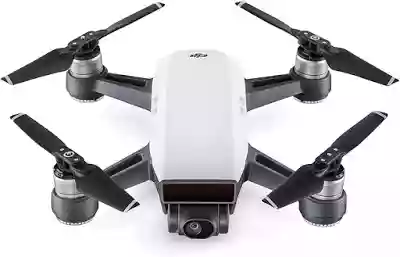
Suddenly, drones could fit in a backpack, or if you have one large enough - a pocket. But it wasn't just about portability with the Mavic Pro, it was also stuffed to the brim with incredible technology that made flying it virtually idiot-proof.
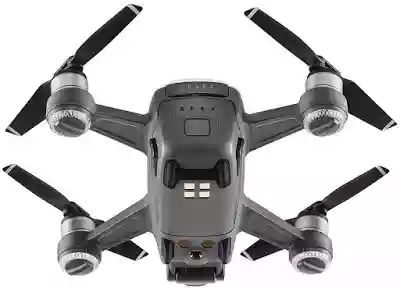
The Mavic Pro is still a hugely popular product, with an ever-growing fan base. Which is the perfect time to introduce its' little brother, the DJI Spark.
While the Mavic Pro is aimed towards people who have experience in photo or video work, but are likely to be inexperienced drone pilots, the Spark is wholeheartedly an entry-level drone. It's a drone that let's you get off the ground (pun intended) and experience the brilliance of DJI, but without making the same level of investment for a Mavic Pro.
Let's have a look at how they stack up with a DJI Spark vs Mavic Pro comparison:
DJI Spark Video Quality
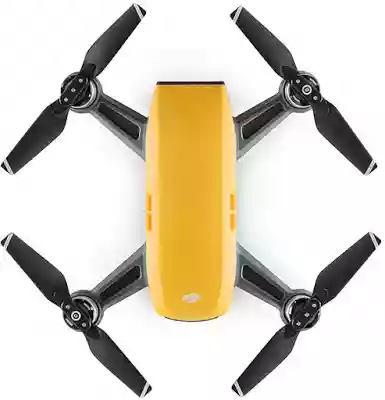
Drones are hugely popular as a way of getting unreal shots and footage that would have been shot on a helicopter in years gone by.
The Mavic Pro sets the standard of video in small, personal drones, with a 4K video camera capable of shooting at 30fps, all stabilised thanks to its' 3-axis gimbal.
The Spark, on the other hand, has a 2-axis mechanical gimbal for smooth and stable video and shoots at Full 1080p HD video at 30p - the perfect size video for sharing on social media, YouTube, or making HD short video clips.
Still Image Quality
The DJI Spark features a 12 megapixel 1/2.3" CMOS sensor and a 81.9 degree 25mm (35mm equivalent) f/2.6 lens with a video ISO range of 100 to 3,200 and a photo ISO range from 100-1,600 and a shutter speed range from 2 seconds to 1/8000s.

This compares to the DJI Mavic that uses a 1/2.3" CMOS 12.35 megapixels (total pixels 12.71 megapixels) sensor and a 78.8 degree 28mm (35mm equivalent) f/2.2 lens, with a video ISO range from 100-3,200, photo ISO range from 100-1,600 and a shutter speed from 8 seconds to 1/8000s.
On the photo front, the Mavic has the ability to shoot in either JPEG or DNG format, which aims it towards a more professional user who will likely want the ability to edit details in their shots, whereas the Spark is aimed at a more casual user as it will only shoot in JPEG.
Drone Size & Weight
The DJI Spark is clearly a much smaller drone than the DJI Mavic, weighing in at only 300g, compared to the Mavic's 743g.
The Spark measures only 170mm on the diagonal, whereas the Mavic is almost twice that at 335mm on the diagonal.
Flying Features
The maximum flight time of the Mavic is an impressive 27 minutes, but it does have a considerably larger 3830mAh battery. However, the DJI Spark is no slouch, with a maximum flight time of 16 minutes thanks to its 1480mAH battery.
If you want to capture scenes far away from where you are, the DJI Spark has a maximum distance of 1.2 miles when used with the optional remote controller, or 109 yards away with a smart device, or up to 10ft away using DJI's innovate gesture control.
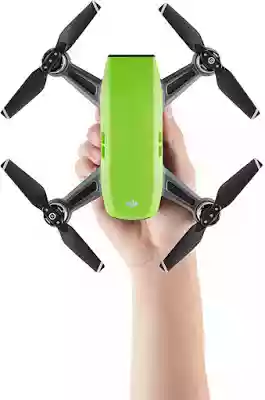
The DJI Spark is also quite nippy, with a maximum speed of 31mph (in sport mode with the optional controller), complete gesture control with just a hand, quick launch that allows the Spark to take off from your hand, and simple control that allows you to take selfies (or 'dronies') with a gesture.
Using the updated DJI GO 4 app, you can edit and share videos easily and quickly with the new QuickShot feature, as well as using ActiveTrack, TapFly, and new Circle and Helix pre-programmed modes that allow you to capture automated flying videos.
Which one should you buy?
Ultimately, the choice of whether you go for the DJI Spark or the DJI Mavic Pro, and either way you'll end up with a truly brilliant drone.
DJI are at the top of their game and the introduction of the Spark means that even more people can get involved with drones.
Where the Spark has the edge over the Mavic Pro is in its' ease of use. The Mavic is by no means complicated to use - the app interface is intuitive and the remote is straightforward, but vs the Spark it's rocket science.
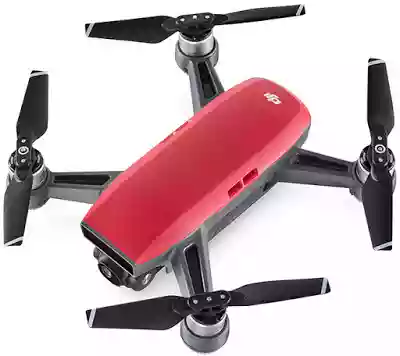
The Spark features Quick Launch - the aircraft will recognise your face and lift off from the palm of your hand in seconds, you can then control it with simple, gesture controls by holding your hand out to move it around you, then with Intelligent Flight Modes and pre-programmed flying patterns you can capture amazing footage with absolute ease. All this can then be edited with the DJI GO 4 app and shared on social media.
If you're looking for a drone that lets you fly without worry, is packed full of DJI's innovative safety features such as FlightAutonomy, Return to Home, and Flight Protection, allows you to capture stunning Full HD video and 12 megapixel stills from the air, and is affordable, then the DJI Spark is the drone for you.
If you're after more precise control, more power and speed, greater range and flying time, and the ability to shoot cinematic 4K video and take DNG raw stills, then the DJI Mavic Pro is the drone for you.
Shop online & in store for the DJI Spark drone at Park Cameras.
Or buy the DJI Spark FlyMore combo for added flying time and extra accessories, including propellers and guards, an extra battery, shoulder bag, charging hub, and remote controller.
The DJI Mavic Pro is in stock and available in store & online at Park Cameras to buy today.
DJI Spark Vs Mavic Pro Specification Comparison Chart |
||
| Feature | DJI Spark | DJI Mavic Pro |
| Camera Sensor | 12 megapixels 1/2.3" CMOS | 1/2.3” (CMOS), Effective pixels:12.35 M (Total pixels:12.71M) |
| Camera Lens | FOV 81.9 degrees, Focal Range: 25mm (35mm equivalent) Aperture f/2.6 |
FOV 78.8° 28 mm (35 mm format equivalent) f/2.2 Distortion < 1.5% Focus from 0.5 m to ∞ |
| Camera ISO Range | Video: 100-3200 Photo: 100-1600 |
Video: 100-3200 Photo: 100-1600 |
| Camera Shutter Speed | 2 seconds - 1/8000/s | 8 seconds - 1/8000/s |
| Camera Image Size | 3968x2976 | 4000x3000 |
| Camera Still Photography Modes | Single Shot Burst Shooting: 3 frames Auto Exposure Bracketing (AEB): 3 bracketed frames at 0.7 EV bias Interval: 2/3/5/6/10/15/20/30/60 seconds |
Single shot Burst shooting: 3/5/7 frames Auto Exposure Bracketing (AEB): 3/5 bracketed frames at 0.7 EV Bias Interval |
| Camera Video Resolution | FHD: 1920x1080 30p | C4K: 4096×2160 24p 4K: 3840×2160 24/25/30p 2.7K: 2720x1530 24/25/30p FHD: 1920×1080 24/25/30/48/50/60/96p HD: 1280×720 24/25/30/48/50/60/120p |
| Camera Max Video Bitrate | 24 Mbps | 60 Mbps |
| Camera Supported FIle Systems | FAT32 | FAT32 ( ≤ 32 GB ); exFAT ( > 32 GB ) |
| Camera Photo Format | JPEG | JPEG, DNG |
| Camera Video Format | MP4 (MPEG-4 AVC/H2.264) | MP4, MOV (MPEG-4 AVC/H.264) |
| Aircraft Takeoff Weight | 300g | 1.62 lbs (734 g) (exclude gimbal cover) 1.64 lbs (743 g) (include gimbal cover) |
| Aircraft Dimensions | 143x143x55mm | Folded: H83mm x W83mm x L198mm |
| Aircraft Diagonal Distance | 170mm | 335 mm |
| Aircraft Maximum Ascent Speed | 9.8ft (3m/s) in Sport Mode without wind | 16.4 ft/s (5 m/s) in Sport mode |
| Aircraft Maximum Descent Speed | 9.8ft (3m/s) in Auto Landing Mode | 9.8 ft/s (3 m/s) |
| Aircraft Maximum Speed | 31 mph (50 kph) in Sport Mode without wind | 40 mph (65 kph) in Sport mode without wind |
| Aircraft Max Service Ceiling Above Sea Level | 13,123 feet (4,000 m) | 16,404 feet (5,000 m) |
| Aircraft Maximum Flight Time | 16 minutes (no wind at a consistent 12.4 mph (20 kph)) | 27 minutes (no wind at a consistent 15.5 mph (25 kph)) |
| Aircraft Maximum Hovering Time | 15 minutes (no wind) | 24 minutes (no wind) |
| Overall Flight Time | - | 21 minutes ( In normal flight, 15% remaining battery level ) |
| Aircraft Operating Temperature Range | 32 to 104 degrees F (0 to 40 degrees Celsius) | 32° to 104° F (0° to 40° C) |
| Aircraft Satellite Positioning Systems | GPS/GLONASS | GPS / GLONASS |
| Aircraft Hover Accuracy Range | Vertical: +/- 0.1m (when Vision Positioning is active) or +/- 0.5m Horizontal: +/- 0.3m (when Vision Positioning is active) or +/- 1.5m |
Vertical: +/- 0.1 m (when Vision Positioning is active) or +/-0.5 m Horizontal: +/- 0.3 m (when Vision Positioning is active) or +/-1.5 m |
| Aircraft Transmitter Power (EIRP) | 2.4 GHz FCC: 25 dBm; CE: 18 dBm; SRRC: 18 dBM 5.8 GHz FCC: 27 dBm; CE: 14 dBm; SRRC: 27 dBM |
- |
| Aircraft Operating Frequency | 2.400 - 2.483 GHz; 5.725 - 5.825 GHz | - |
| 3D Sensing System Obstacle Sensing Range | 1-16ft (0.2 - 5m) | - |
| 3D Sensing System Operating Environment | Detects diffuse reflective sufraces (>20%) larger than 20x20 cm (walls, trees, people, etc.) | - |
| Remote Controller Operating Frequency | 2.412-2.462 GHz; 5.745-5.825 GHz | 2.4 GHz to 2.483 GHz |
| Remote Controller Max Transmission Distance | 2.412 - 2.462 GHz (unobstructed, free of interference) FCC: 1.2 mi (2 km); CE: 0.3 mi (500 m); SRRC: 0.3 mi (500 m) 5.745 - 5.825 GHz (unobstructed, free of interference) FCC: 1.2 mi (2 km); CE: 0.18 mi (300 m); SRRC: 0.7 mi (1.2 km) |
FCC Compliant: 4.3 mi (7 km); CE Compliant: 2.5 mi (4 km) (Unobstructed, free of interference) |
| Remote Controller Operating Temperature Range | 32° to 104° F (0° to 40° C) | 32° to 104° F (0° to 40° C) |
| Remote Controller Battery | 2970 mAh | 2970mAh |
| Remote Controller Transmitter Power (EIRP) | 2.4 GHz FCC: ≤26 dBm; CE: ≤18 dBm; SRCC: ≤18 dBm 5.8 GHz FCC: ≤28 dBm; CE: ≤14 dBm; SRCC: ≤26 dBm |
FCC:≤26 dBm CE:≤20 dBm |
| Remote Controller Operating Current/Voltage | 950 mAh @3.7 V | 950mA @ 3.7V |
| Remote Controller Supported Mobile Device Site | Thickness range: 6.5-8.5 mm Max length: 160 mm |
Thickness Supported:6.5-8.5mm Max length: 160mm Supported USB port types: Lightning, Micro USB(Type-B),USB(Type-C)™ |
| Intelligent Flight Battery Capacity | 1480 mAh | 3830 mAh |
| Intelligent Flight Battery Voltage | 11.4V | 11.4V |
| Intelligent Flight Battery Max Charging Voltage | 13.05V | - |
| Intelligent Flight Battery Type | LiPo 35 | LiPo 3S |
| Intelligent Flight Battery Energy | 16.87 Wh | 43.6 Wh |
| Intelligent Flight Battery Net Weight | Approx. 0.2 lbs (95g) | Approx.0.5 lbs(240 g) |
| Intelligent Flight Battery Charging Temperature Range | 41° to 104° F (5° to 40° C) | 41° to 104° F (5° to 40° C) |
| Gimbal Controllable Range | Pitch: -85° to 0° | Pitch: -90° to +30° Roll: 0° or 90° (Horizontally and vertically) |
| Gimbal Stabilisation | 2-axis mechanical (pitch, roll) | 3-axis (pitch, roll, yaw) |
| Vision System | - | Forward Vision System Downward Vision System |
| Vision System Obstacle Sensory Range | - | Precision measurement range: 2 ft (0.7 m) to 49 ft (15 m) Detectable range: 49 ft (15 m) to 98 ft (30 m) |
| Vision System Velocity Range | ≤22.4 mph (36 kph) at 6.6 ft (2 m) above ground | ≤22.4 mph (36 kph) at 6.6 ft (2 m) above ground |
| Vision System Altitude Range | 0-26 ft (0 - 8 m) | 1 - 43 feet (0.3 - 13 m) |
| Vision System Operating Range | 0-98 ft (0 - 30 m) | 1 - 43 feet (0.3 - 13 m) |
| Vision System Operating Environment | Detects clearly patterned surfaces with adequate lighting (lux>15) and diffuse reflectivity (>20%) | Surface with clear pattern and adequate lighting (lux > 15) |
| Wi-Fi Operating Frequency | 2.4 GHz/5.8 GHz | 2.4G/5G |
| Wi-Fi Maximum Transmission Distance | 100 m(Distance), 50 m(Height) (Unobstructed, free of interference) | 80 m(Distance), 50m(Height) (Unobstructed, free of interference) |
| Wi-FI Maximum Speed | - | 14 km/h (9 mph) |
| Wi-Fi Maximum Ascent Speed | - | 6.6 ft/s(2 m/s) |
| Wi-Fi Maximum Descent Speed | - | 3.3 ft/s(1 m/s) |
| Charger Input | 100-240 V; 50/60 Hz; 0.5 A | 13.05 V |
| Charger Output | 5 V/3 A; 9 V/2 A; 12 V/1.5 A | 50 W |
| Recommended Micro SD Cards | Sandisk 16/32 GB UHS-1 Micro SDHC Kingston 16/32 GB UHS-1 Micro SDHC Samsung 16/32 GB UHS-I Micro SDHC Sandisk 64 GB UHS-1 Micro SDXC Kingston 64 GB UHS-1 Micro SDXC Samsung 64 GB UHS-I Micro SDXC |
Micro SD™ Max capacity: 64 GB. Class 10 or UHS-1 rating required |
Related Articles
The 14 Best Mirrorless Cameras in 2017
2017 Calendar Photography Competition Results... So Far...
DJI Phantom 4: hands on review from a first time flyer
Olympus Tough TG-5 vs TG-4 Comparison
Canon EOS M6 Review: The Vlogger's Camera?
Share this post:
By Park Cameras on 24/05/2017

Trade in your old equipment
Fast and easy trade in service ensures your old gear is collected efficiently and you are paid quickly! It's very simple to trade in your unwanted photography gear. Just head over to our dedicated Sell or Part Exchange page, fill out the details, and we'll get back to you with an offer for your old gear. Take the cash, or put it towards the cost of your new gear. It's up to you! Find out more
sign up to the newsletter
Keep up to date on the latest photography news, events and offers. Sign up now
